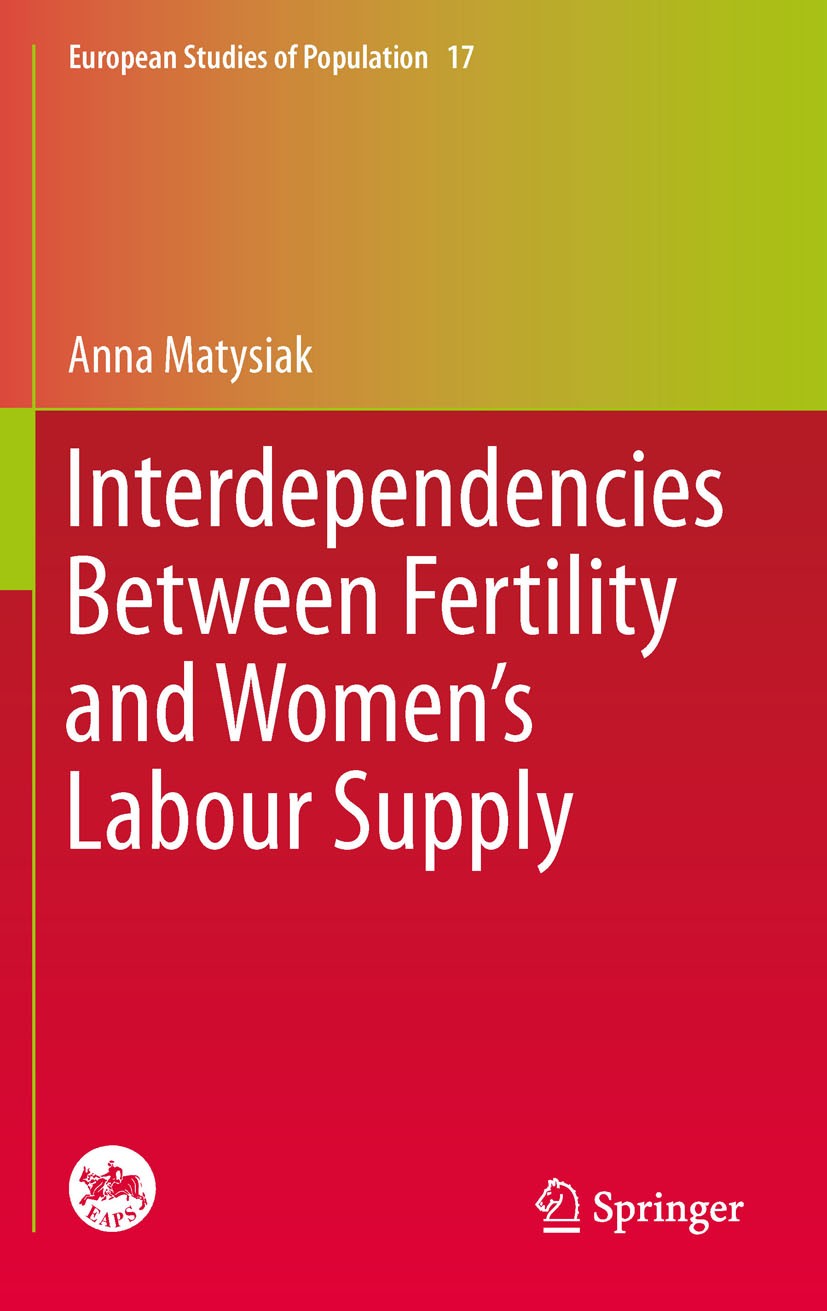| 书目名称 | Interdependencies Between Fertility and Women‘s Labour Supply |
| 编辑 | Anna Matysiak |
| 视频video | http://file.papertrans.cn/471/470752/470752.mp4 |
| 概述 | Developing measures of potential work-family tensions imposed by the macro-context.Ranking EU member states according to the conditions for work and family reconciliation.Systematising and assessing t |
| 丛书名称 | European Studies of Population |
| 图书封面 |  |
| 描述 | .The book explores interlinkages between women’s employment and fertility at both a macro- and a micro-level in EU member states, Norway and Switzerland. Similarly as many other studies on the topic, it refers to the cross-country variation in the macro-context for explaining cross-country differences in women’s labour supply and fertility levels. However, in contrast to other studies, which mainly focus on Western Europe, it extends the discussion to Central and Eastern European countries. Furthermore, it looks at the macro-context from a multi-dimensional perspective, indicating its four dimensions as relevant for fertility and women’s employment choices: economic (living standards), institutional (family policies), structural (labour market structures), and cultural (social norms). A unique feature of the study is the development of indices that measure the intensity of institutional, structural, and cultural incompatibilities between women’s employment and fertility. These indices are used for ranking European countries from the perspective of the country-specific conditions for work and family reconciliation. A country where these conditions are the worst, but where women are |
| 出版日期 | Book 2011 |
| 关键词 | Age structures; Childbearing; Employment choices; Family; Fertility and women‘s labour supply; Indices th |
| 版次 | 1 |
| doi | https://doi.org/10.1007/978-94-007-1284-3 |
| isbn_softcover | 978-94-007-3646-7 |
| isbn_ebook | 978-94-007-1284-3Series ISSN 1381-3579 Series E-ISSN 2542-8977 |
| issn_series | 1381-3579 |
| copyright | Springer Science+Business Media B.V. 2011 |
 |Archiver|手机版|小黑屋|
派博传思国际
( 京公网安备110108008328)
GMT+8, 2025-11-20 03:11
|Archiver|手机版|小黑屋|
派博传思国际
( 京公网安备110108008328)
GMT+8, 2025-11-20 03:11


